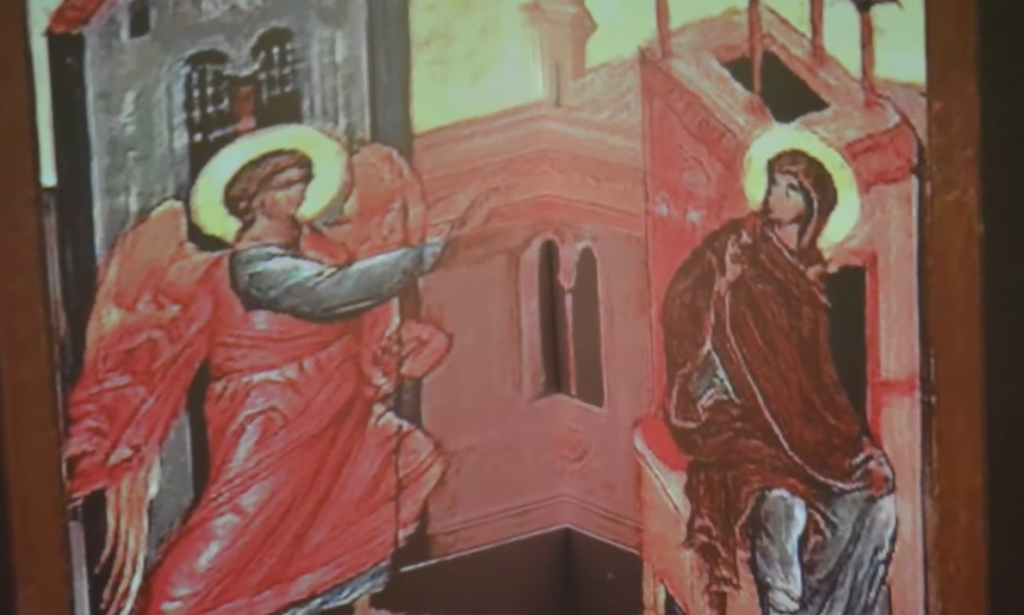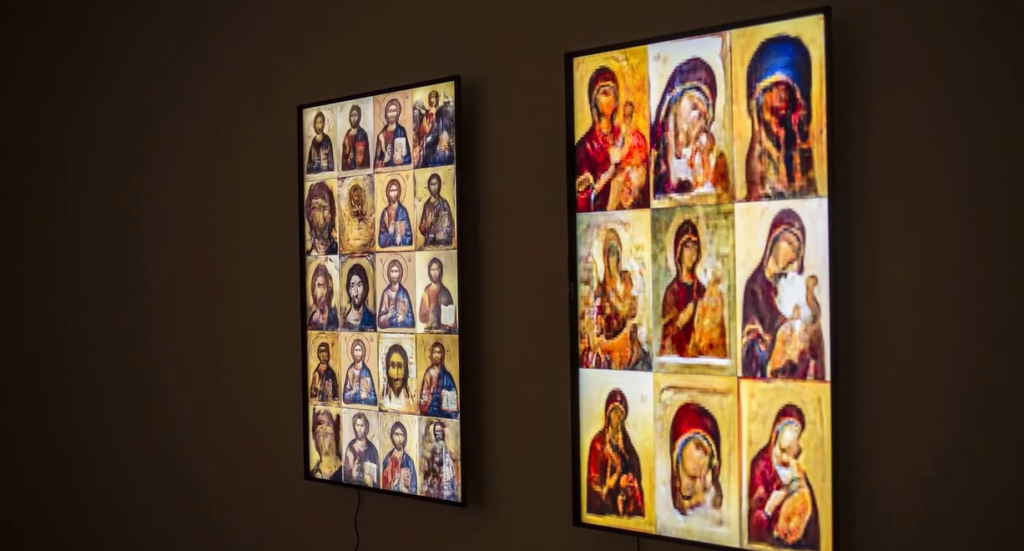Kristina Tica draws attention to the form, limitations and advantages of a medium regarding artistic expression. The interaction between the artist and the medium that is being used for the production of an artifact is a retrograding process. The artist influences the medium and the medium influencing the artists in a constant and uninterrupted fashion. For this art installation, Kristina Tica used visual coding and AI neural networks. She emphasized on the interest that arises from trying to get behind the invisible mechanism on which the user interface of a medium influences the interaction between the artist and the artwork. With this state of mind, she experiments with the boundaries and limitation of visual programming in an attempt to discover its boundaries.
Digital Prayer
Her team created an AI neural network that collected and analyzed more than 40 thousand pictures of traditional Christian Orthodox iconography and proceeded to generate religious depictions autonomously. Kristina believes that the chaotic world of numbers in a code and all the uncountable calculations done by the AI neural network take substance in the form of those pictures. In the same way a picture communicates silently many unspoken words, the neural network communicates with pictures all the invisible numbers that stand behind it. It is worth to be mentioned, that during the presentation of the installation in physical space, both the generated artifacts and the code behind each of them will be exposed to the audience.
In my opinion, and based on my cultural background, unifying religious artifacts with artificial intelligence is simultaneously fascinating and highly controversial.
As an individual I was caught off guard when I stumbled upon this project because it made me realize that religion is one aspect of life that has yet not been subjected to any substantial forms of digitalization. We live in a world where many of the aspects of our lives are heavily influenced by technology and digitalization and humanity is in the process of actively pursuing to digitalize even more areas of life. The matter of faith and religion proposes a huge topic of analysis and a challenging task when it becomes subjective to AI and technology.
As an interaction designer it is challenging thinking of the parameters and the approaches that should be considered, or even allowed, when attempting to build an effective hypothetical digitalized interaction between humans and their faith.


